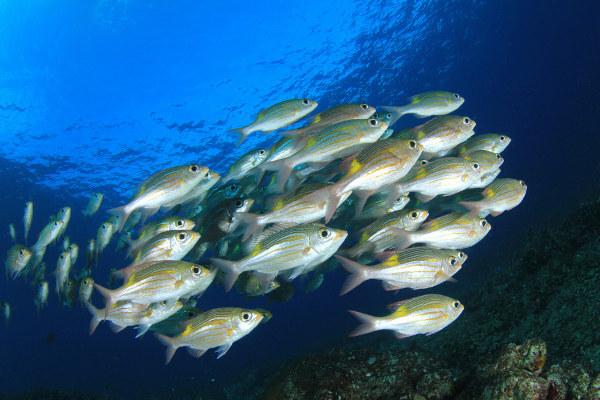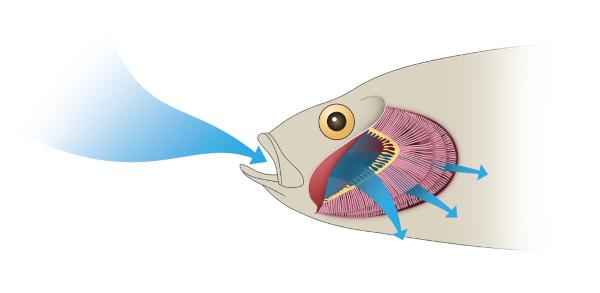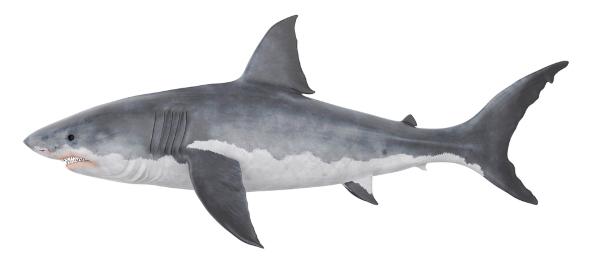You fishes are found in the most varied aquatic environments and are characterized by being the most numerous and diverse group in the vertebrates. In this group of animals, we have representatives with a typically fusiform body; breathing usually of the gill; presence of fins; and ectothermy. This group includes cartilaginous fish, which have a skeleton formed by cartilage, and bone fish, which have the bony skeleton.
It is noteworthy that many changes occurred in the classification of animals after adopting the cladistic methodology and improving the analysis techniques of DNA. Recent studies demonstrate, for example, the monophyly of the agnatha and of the Chondrichthyes, but not the Osteichthyes, that it is a paraphyletic group.
The taxonomic meaning of Osteichthyes nowadays it is quite different from what it was in the past, when it referred to bony fish and excluded the tetrapod group. Today systematists include tetrapods in the clade Osteichthyes. In our text, however, we chose to use the terms in their classic sense, as this form is addressed in textbooks and charged in selection processes.
Know more:Kingdom Animalia, also known as Metazoa

General characteristics of fish
The fishes are vertebrate animals that live exclusively in the aquatic environment. They have different sizes, shapes and colors, being animals of great economic importance, since are used in our food, in practices such as sport fishing and also in aquarium farming, for example.
fish have a complete digestive system, with intestine ending in cloaca in cartilaginous fish and in anus in bony fish. O excretory system of these animals is formed by a pair of kidneys. In cartilaginous fish, urea is mainly excreted, and in bony fish, ammonia is eliminated.
O circulatory system is closed, and the presence of a heart with two cavities: an atrium and a ventricle. In this important pumping organ of blood, only blood rich in carbon dioxide (venous) circulates. Circulation in fish is simple, since blood passes through the heart only once, in each complete circuit, through the animal's body. Blood enters the heart through the atrium, travels to the ventricle, and is pumped toward the gills, where it is oxygenated. This blood is then taken to the animal's body.

We cannot fail to mention the lung fish (dipnoi). Currently this group has only six species, which are found only in freshwater from South America, Africa and Australia. The species of lung fish existing in Brazil is known as piramboia. She is able to build galleries, which she uses as shelter to protect herself from drought and predators.
Fish have powerful and efficient Sensory organs, like the sideline. These structures, located laterally in the fish, allow the animal to capture movements in the water and, consequently, avoid predators. In addition to the lateral lines, the fish have developed olfactory lobes, which allow the perception of smells, and with the Lorenzini ampoules, that allow the capture of electrical currents produced by other animals. These ampoules are only found in cartilaginous fish.
Fish, in general, are ectothermic animals, that is, they are unable to maintain their body temperature constant using physiological mechanisms. Some species, however, are able to keep parts of their body warmer than others (regional heterothermia), managing to raise the temperature through the endothermic production of heat. Tuna and some sharks have this ability.
Fish reproduction varies from group to group.. In cartilaginous ones, it occurs fertilization internal; in most bony fish, external fertilization occurs. In bony fish, it is possible to observe, in some species, indirect development, with the formation of larvae, and the development of a stage called fingerling.
Read too: Osmoregulation in fish
Adaptations of fish to the aquatic environment
To live in the aquatic environment, fish have a large number of adaptations, highlighting the presence of gills.
These richly vascularized, blade-shaped organs allow gas exchange between the water in the medium and the animal's blood, which constitutes gill respiration. The water initially enters the mouth, passes through the slits in the pharynx, travels to the gills, and then leaves the animal's body. Coordinated movements of the operculum and mandibles allow water to reach the gills. The swimming movement can also be used to ensure ventilation of the gills.

In addition to the presence of gills, fish have a body with hydrodynamic shape, which aids movement in the water. Usually fish have a fusiform body, ie, elongated and with tapered ends, which allows better swimming. Fish with a fusiform shape can achieve high swimming speed.
In addition to the characteristic shape, the fish have large amount of mucus on your skin, which helps to reduce friction with water. Mucus, like scales, also plays an important role in protecting fish against pathogens.
Also noteworthy is the presence of fins, which vary in shape, size and position in each species of fish. These structures have as main functions: to maintain the fish's balance, to help in the change of direction and depth, and to act as propellers, as in the case of the caudal fin.
In addition to having adaptations to facilitate swimming, fish have strategies to avoid sinking, since they have a density greater than that of water. Float is guaranteed in cartilaginous fish due to the presence of a developed liver and with a lot of fat. In bone fish, however, there is a swim bladder, a hydrostatic organ that allows the fish to swim to the bottom and to the surface.
Read too: fish tapeworm
Bone and cartilaginous fish

Fish can traditionally be divided into two large groups: the cartilaginous fish (Chondrichthyes) and the bone fish (Osteichthyes). Cartilaginous fish receive this name because they do not have bones forming their skeleton, which is predominantly made up of cartilage. sharks, stingrays and chimeras are representatives of this group of fish, being most of the marine species.
Another characteristic of this group is the presence of tooth-like plaques that cover the body of these animals, the so-called placoid scales. In sharks and stingrays, placoid scales cover a large part of their bodies, in chimeras, however, they are present in specific portions.
Cartilaginous fish also have a very striking characteristic, which is the presence of the clasper, a modification of part of the male pelvic fin rays, which act in reproduction. In cartilaginous fish, fertilization is exclusively internal. Other characteristics that exist in this group of fish that allow its bone fish differentiation they are: ventral mouth, presence of cloaca, urea excretion and absence of swim bladder.

You bone fish, just as the name suggests, feature a bony skeleton. In these animals, the gills are covered by operculum, a kind of bone flap that protects these structures. In bony fish, the presence of swim bladder. Other features that can be mentioned are: mouth at anterior extremity, intestine ending in anus and ammonia excretion.
By Vanessa Sardinha dos Santos
Biology teacher
